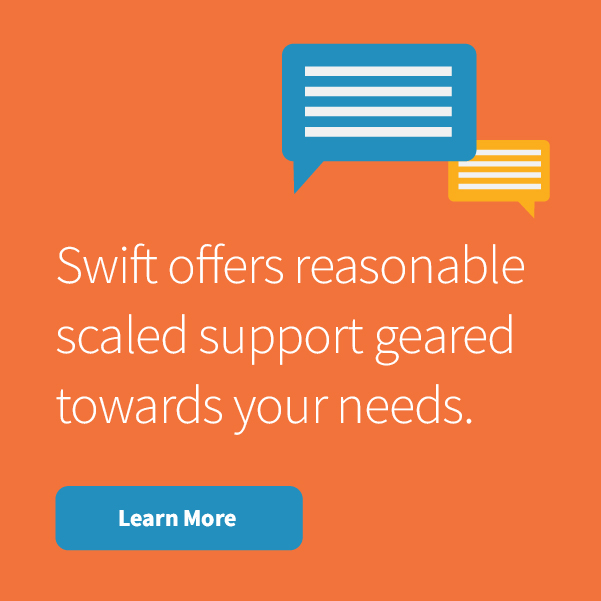For many businesses, short message service (SMS) messaging has become an indispensable tool to address customers’ increasing demand for personalization and declining organic reach in search engines. However, this widespread use has also led to concerns about spam and unsolicited messages.
To address these issues, the Federal Communications Commission (FCC) and mobile carriers have introduced regulations around Application-to-Person (A2P) messaging, most notably through the implementation of 10-Digit Long Code (10DLC) standards. In Canada, the same general rules apply, but the Canadian Radio-television and Telecommunications Commission (CRTC), has not centralized the management of it.
This guide provides an overview of 10DLC compliance, explaining its importance, outlining the 10DLC registration process and detailing best practices for maintaining compliance. By understanding and adhering to these guidelines, businesses can ensure their messages reach their intended recipients, build trust with their customers and avoid costly penalties.
What Is the 10 Digit Long Code and Why Does It Exist?
A 10DLC is a standard phone number, like the one you use to call your friends and family. However, unlike traditional long codes, which were often used for person-to-person (P2P) messaging, 10DLC is specifically designed and approved for A2P messaging.
This means a business can use a 10DLC number to send bulk SMS messages to its customers in the United States and Canada. So, why was 10DLC introduced?
Several factors contributed to its development:
- Spam prevention: Traditional long codes were often misused by spammers, leading to a poor user experience and a distrust of SMS messaging. Certainly, the new standard helps to address some of those issues. However, with spam text messages increasing from 7.4 billion in 2021, so pre-10DLC, to 78 billion in the first half of 2023, legitimate businesses need to do their part.
- Consumer protection: 10DLC regulations aim to protect consumers from unwanted messages by ensuring they have given their consent to receive them. This helps to build trust and improve the overall effectiveness of SMS marketing.
- Carrier compliance: Mobile carriers needed a way to manage the 19.48% volume growth of A2P messages between 2017 and 2019. 10DLC provides a standardized framework that allows each mobile network operator to effectively monitor and regulate message traffic, ensuring network stability and deliverability.
Advantages of 10DLC
10DLC offers several advantages over traditional long codes, short codes and toll-free numbers for A2P messaging:
- Higher throughput: Compared to traditional long codes, 10DLC offers significantly higher messaging throughput, allowing businesses to send messages to a larger audience more quickly.
- Cost-effectiveness: While short codes offer high throughput, they’re also significantly more expensive than 10DLC numbers. 10DLC provides a cost-effective alternative for businesses that need to send bulk SMS messages.
- Local presence: 10DLC numbers can be provisioned with a local area code, which can improve message deliverability and increase customer engagement.
- Improved deliverability: 10DLC is designed to work within the carrier ecosystem, improving message deliverability and reducing the likelihood of messages being blocked or filtered.
The Campaign Registry (TCR) and Brand Registration: What You Need To Know
TCR is a central hub that plays a critical role in the 10DLC ecosystem exclusively for U.S. campaign’s. It’s responsible for registering and validating brands and their messaging campaigns. TCR acts as a bridge between businesses, mobile carriers and messaging providers, ensuring that A2P messages are sent in compliance with industry standards for U.S. campaigns.
In Canada the TCR is not used. It’s job is left to your messaging service provider as your CSP (Campaign Service Provider) to ensure compliance with Canadian mobile carriers.
In both countries, your messaging service provider is critical as the connectivity gateway to your broadcast messaging, so let’s breakdown the brand and campaign registration process:
- Brand registration: Businesses do not directly register with TCR. Instead, they work with a registered messaging service provider (like Swift SMS Gateway) to register their brand with TCR.The messaging provider plays a crucial role in this process:
- The messaging provider registers each standard brand with TCR.
- The messaging provider submits information about the business to TCR, including details like the business’s legal name, address and Employer Identification Number. This information is used to verify the legitimacy of the business and ensure that it’s authorized to send SMS messages.
- Campaign registration: Once a brand is registered, the messaging service provider registers the messaging campaigns on behalf of the business. A campaign represents a specific use case for sending SMS messages, such as marketing promotions, appointment reminders or customer service notifications.When registering a campaign, the messaging provider must provide details about the type of messages that will be sent, the target audience and the messaging frequency. They also need to provide a sample message.
- The messaging provider registers campaigns on TCR and receives unique campaign IDs.
- The Direct Connect Aggregator uploads numbers with associated campaign IDs to their Network Node Identifier in the netnumber Services Registry.
- Following this sanctioned process, the brand can now message end users.
Several factors can lead to campaign rejections. Here are some common reasons and how to avoid them:
- Incomplete or inaccurate information: Ensure that all required information is provided, that it’s accurate and up-to-date.
- Prohibited content: Avoid sending messages that contain prohibited content, such as spam, illegal substances or hate speech.
- Lack of consent: Ensure that you have obtained proper consent from your recipients before sending them messages.
- Unclear use case: Clearly define the purpose of your messaging campaign and provide detailed information about the types of messages you will be sending.
- Mismatch between brand and campaign information: Check whether the information provided during brand registration aligns with the information provided during campaign registration.
Carriers review the information provided during the registration process to ensure that it meets their requirements. They may also monitor message traffic to detect and prevent spam and other violations.
A2P Messaging Guidelines: Opt-In, Vetting and Spam Prevention
A2P messaging refers to the practice of businesses sending messages to individual consumers. It differs from P2P messaging, which involves messages sent between two individuals. A2P messaging is typically used for marketing, customer service and other business-related communications. To make it work for your brand and avoid campaign disruptions, though, you need to be proactive.
To ensure compliance and maintain a positive user experience, businesses must adhere to strict guidelines when sending A2P messages. Here are some key considerations:
- Explicit consumer opt-in: Consumers must actively agree to receive messages from your business. Approved opt-in methods include:
- Website forms with a checkbox.
- Text message keywords.
- Verbal consent (with proper documentation).
- Spam prevention tactics: To prevent spam and maintain compliance, businesses should implement the following tactics:
- Provide clear opt-out instructions in every message.
- Honor opt-out requests promptly.
- Avoid sending messages to recipients who haven’t given their consent.
- Monitor message frequency to avoid overwhelming recipients.
- Regularly review your contact list to remove inactive or unsubscribed numbers.
- Carrier monitoring and enforcement: Mobile carriers actively monitor A2P message traffic to ensure compliance. They may use various methods, including:
- Message filtering: Blocking messages that are suspected of being spam.
- Audits: Reviewing messaging campaigns to ensure compliance with regulations.
- Penalties: Imposing fines or suspending messaging privileges for non-compliant businesses.
Compliance for 10DLC: Legal Requirements and Best Practices
Both the United States and Canada have legislative requirements to prevent SPAM and encourage best practices in broadcast messaging. The Telephone Consumer Protection Act (TCPA) is the U.S. federal law that protects consumers from unwanted telephone solicitations, including SMS messages. The Canadian Anti-Spam Legislation (CASL) is the Canadian equivalent. Both establishes guidelines for obtaining consent, sending messages and maintaining records.
Here’s an overview of their rules and relevance to 10DLC:
- Consent requirements: It is required that businesses obtain prior written consent before sending marketing messages to consumers. Implied consent is not sufficient for marketing messages.
- Record keeping and compliance documentation: Businesses must maintain records of consumer consent to demonstrate compliance with the TCPA and CASL.
- Consequences of non-compliance: Violations of the TCPA and CASL can result in significant penalties as well as damage your business reputation and erode customer trust.
To mitigate these risks, here are some best practices for TCPA and CASL compliance:
- Obtain explicit written consent before sending any marketing messages.
- Clearly and conspicuously disclose the purpose of your messages.
- Provide a clear and easy way for recipients to revoke their consent.
- Regularly review your messaging practices to ensure compliance with the latest regulations.
Maintaining 10DLC Compliance: Best Practices for Long-Term Success
10DLC compliance is not a one-time effort. After the initial campaign registry, it requires ongoing attention and adherence to best practices to ensure long-term success, from opt-in messaging to technical setup. Here are some key considerations:
Regularly Reviewing and Updating 10DLC Campaign Details
It’s essential to periodically review your campaign details with your CSP directly whether using The Campaign Registry in the U.S. or your Canadian message service provider to ensure that they’re accurate and up to date. This includes verifying your brand information, campaign description and messaging samples.
Staying on Top of A2P 10DLC Regulations
The rules and regulations surrounding 10DLC messaging are constantly evolving. To ensure your messaging practices remain compliant, you need to stay informed about the latest carrier rule changes.
Don’t Risk It: Partner With a Compliance Expert
Maintaining 10DLC compliance can be complex, but it’s essential for businesses that rely on SMS messaging. It’s important to remember that 10DLC compliance isn’t just about avoiding penalties; it’s also about building a sustainable and effective SMS messaging strategy. By prioritizing compliance, you can improve message deliverability, increase customer engagement and enhance your overall brand reputation.
To navigate the complexities of 10DLC compliance and ensure the long-term success of your SMS messaging campaigns, you’ll want to partner with a trusted and experienced SMS gateway provider. Swift SMS Gateway was the only Canadian text messaging company that was involved in TCR (The Campaign Registry) from inception and have a deep understanding of regulatory issues and developments across North America.
Sign up for a free demo with Swift SMS Gateway today to see how you can ensure your messages are delivered reliably and in full compliance with all regulations.


